With Mexican protected areas remaining closed due to the pandemic, my two recent exploratory trips covered their exterior boundaries instead. Being on the Sea of Cortez brought back a lot of nostalgia from the time when I first came here. It was almost 20 years ago now I was here with an excellent skipper and local named Javier or “Machaca.”
The spirit of Captain Jose of Don Jose, one of the first liveaboards on the Sea of Cortez, was also with me. I used to say to him that he was the devil himself, who later became a kind soul. He showed me the different dive sites in the area and taught me how to wash my t-shirts in soap and water, not just seawater.
Then there was Tim Means, whose spirit will forever remain in Baja and the Sea of Cortez. All the locals know that he was the owner of Baja Expeditions and the grandfather of ecotourism. He might have been a bit of a pirate at times, but if you talk to the local fishermen, you will find that a lot of them respected him.
The spiritual Sea of Cortez
The water, the lights, the sunrises and the sunsets are magical on the Sea of Cortez. How a sea can become so calm as a mirror, especially in the summer, to wild and fierce coming from more or less nowhere. I have seen about 10 different species of whales here. I won’t ever forget the time when a blue whale surfaced beside one of the day dive boats I was on and I had hardly seen anything bigger than a Pike in Sweden…
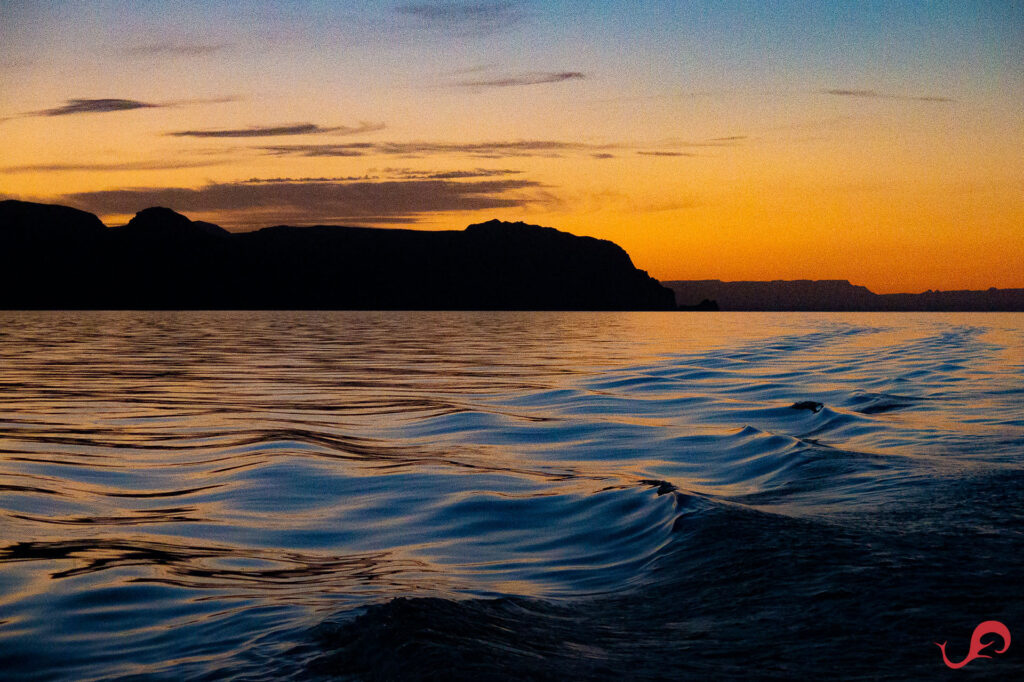
Mantas in La Reina
I saw my very first manta in the Sea of Cortez… a real manta at La Reina, which is located north of Cerralvo Island. We saw them regularly until 2004, then they disappeared. The next manta that I saw here came 14 years later, which was a pleasant surprise. We saw one again on this trip, a small male that stayed with us when he saw that we were just letting him be.
Guadalupe fur seals reaching Las Animas
Las Animas was old, wooden liveaboard Don Jose’s favorite place. It has a lot of dive sites, reefs, pinnacles, caves and some sea lions. This time the water was green, unfortunately. (According to some local fishermen, it was clear the week before.) But I have never seen so many sea lions! I estimated them to be over 200 individuals; here there used to be, at the most, 40 over the whole island.
Upon closer inspection, they were more black than brown… smaller and didn’t sound right. It takes time to realize something that doesn’t belong to places you usually see often. They were not the regular Californian sea lions; they were Guadalupe fur seals! The local fishermen confirmed that it was the first time that they have seen them in the area. They called them “small sea lions.”
According to the locals, Guadalupe fur seals could be encountered in the northern part of the Sea of Cortez, but it’s something that I need to do more research on. I have not seen them at Las Animas before in the 20 years that I have been diving here.
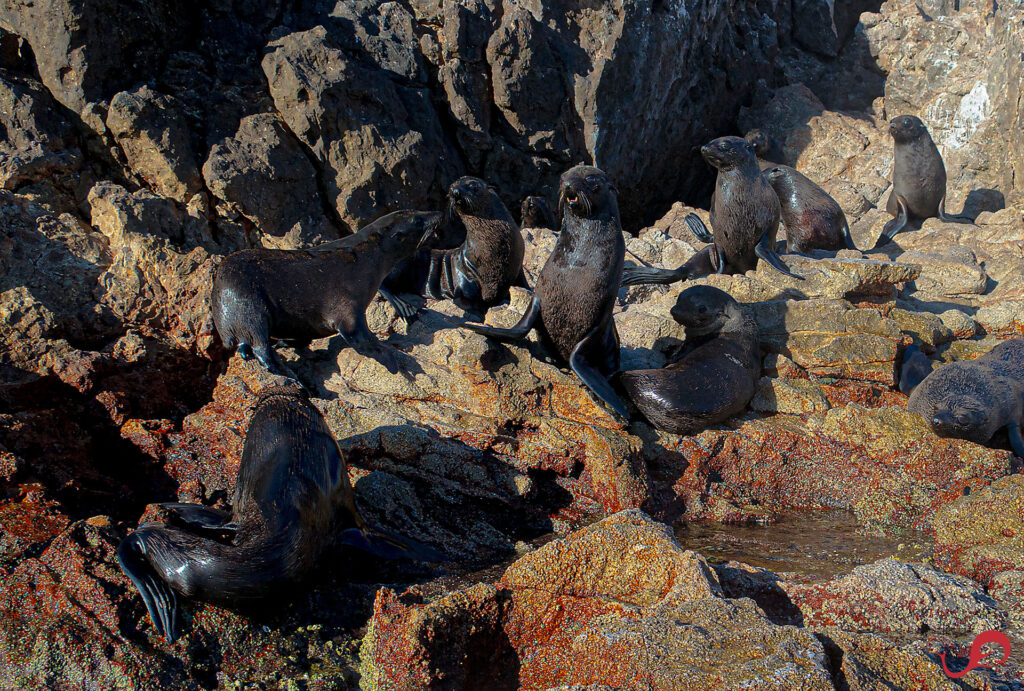
Spotted dolphins and exploring Santa Cruz Island
Las Animas has a lot of life due to the currents from both shallow and deep waters. Here you can get 31 degrees Celsius (88 F) at the surface in the summer and then 15 degrees Celsius (59 F) 30 meters (98 feet) down. You get a bit of a shock when you get down to that depth when diving in a shorty. It seems that I never learn…
We had a nice hunting group of around 200 spotted dolphins, which we got a few glimpses of again at San Diego reef that is north of Las Animas. Not easily accessible to divers, San Diego reef is a shallow and very rich reef with nice swim-throughs.
We went further to Santa Cruz and decided to check the very north point as the current speeds up there. The deep part of the point was covered in neon yellow black coral. On the west side there was a crazy school of fighting Mexican hogfish. They look blue, but when you shine the light on them, you will see that they are red with a yellow stripe and a bump on their head. I have not seen so many in one spot. There were a couple of mobulas, but not the big groups that we’re used to seeing.
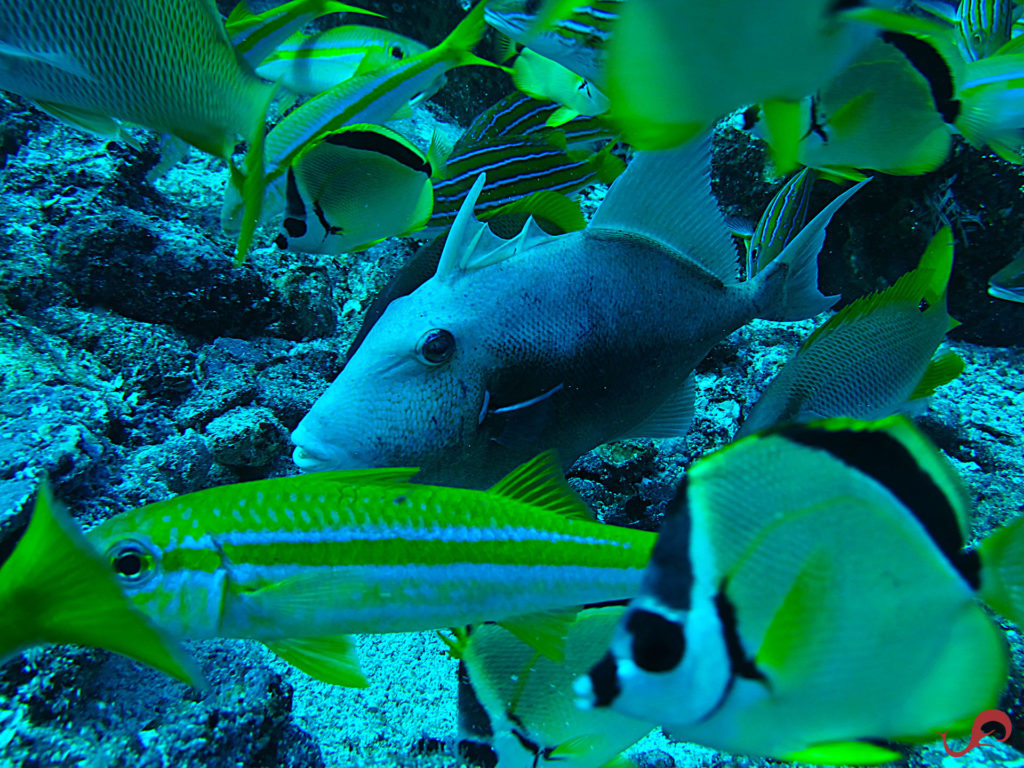
Mangroves and a top-notch dive at a new pinnacle
The local guys said that they had been seeing blue whales the past few days in the channel of San Jose, so we went there. We didn’t see the whales this time, but we encountered dolphins, mobula rays, and a beautiful sunset.
There is this little secret place by the Island of San Jose that is a mangrove area. It’s very rare to see mangroves in this arid environment, so this spot is like a resort for small species and birdlife. When you get inside the lagoons, you also get a feeling that you’re going through rivers. It’s worth looking under the mangrove trees, where you will find between the roots a kindergarten for fish, sponges, and creatures that you don’t see in the sea. I could have stayed here a week looking at all the small stuff. I think it is the only tree that can live on saltwater.
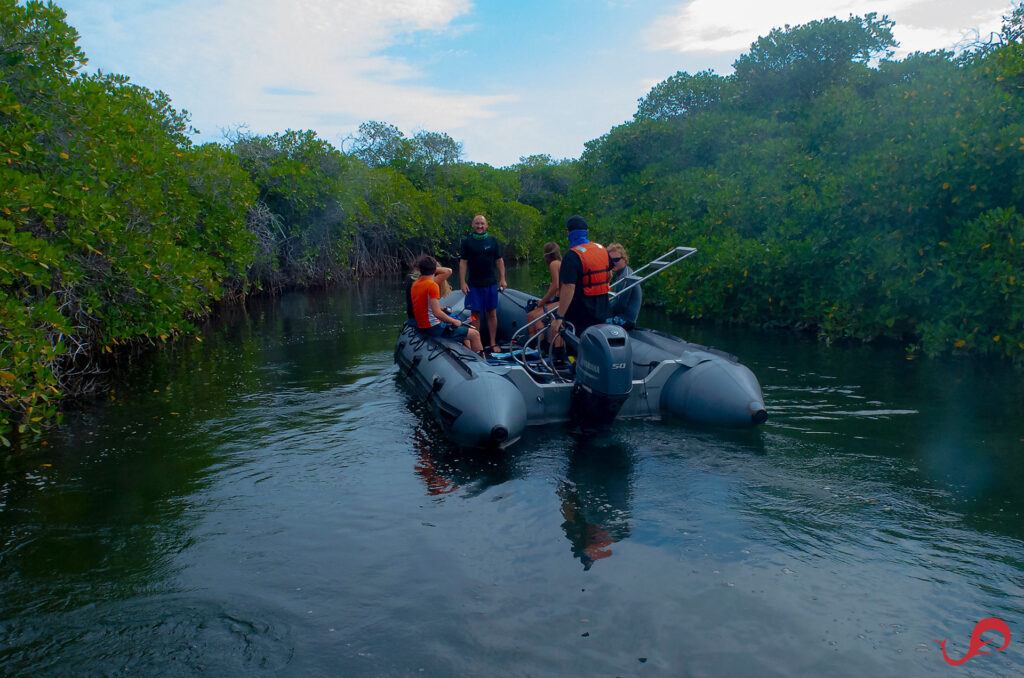
The next day Captain Gordon said he had a dive spot on a pinnacle he dove with me years ago. Okay, either he or I have gotten old because I remember almost all the dive sites that I have visited. It turns out he was the one who had gotten old and I was happily right that I haven’t been here before. The sonar showed a change in depth from 45 meters (148 feet) to 18 meters (59 feet), so we dropped a weight with a buoy.
I made a splash before setting people down. The visibility in the first 18 meters (59 feet) was Baltic sea-like pea soup and I thought to myself while descending, “People won’t like this…” It was dark at 28 meters (91 feet) with full sunlight above me, but it was clear 30 meters (98 feet) horizontally. Suddenly an undersea mountain appears in front of me. I encountered the weight that we dropped at 41 meters (135 feet), so I brought it up to 18 meters (59 feet). Big groupers, lots of fish and the sparkling yellow black coral forest is so beautiful. A top dive site!
When I was back on the boat, I told the group what I saw in the briefing: Down to 18 meters, it is like pea soup with not much current. My recommendation is to go deeper than 28 meters, remember your PO2 and do it short and deep. Some stood off, while others loved it so much that we did it again the next day.
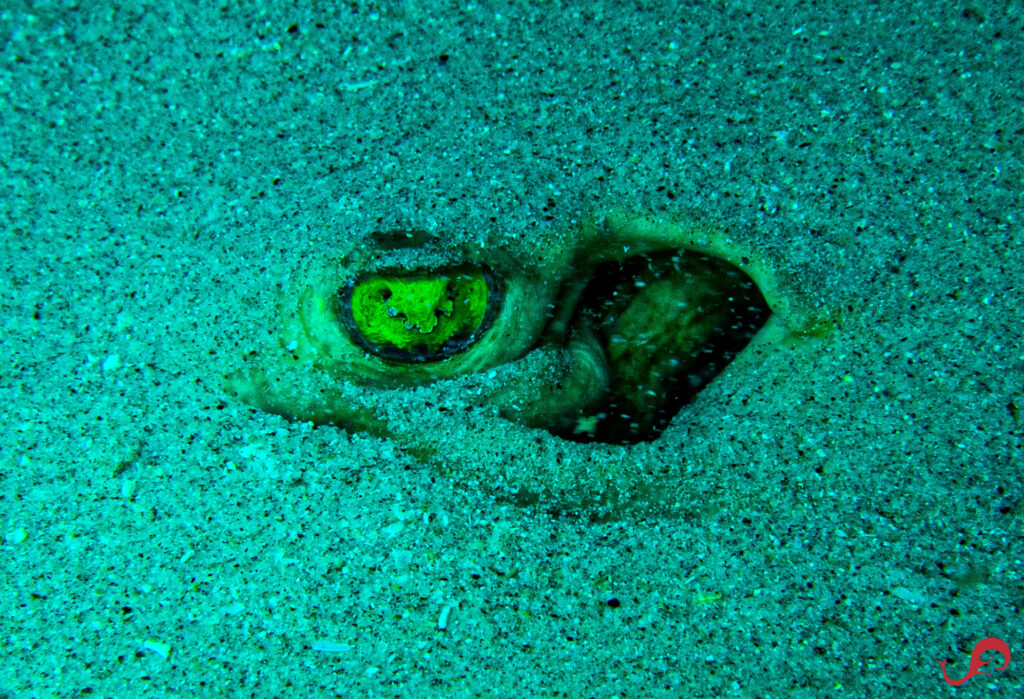
Finishing up on the Sea of Cortez with flying mobulas and some exploration
We kept on exploring as we couldn’t dive parks because of the pandemic. I liked that and a lot of our guests did as well. We went back to La Reina and saw a manta and loads of fish again. The baitballs were getting attacked by big jacks and dorado. On the way down to Cerralvo we looked for a missing male kayaker that the navy asked us to keep an eye out for. They found his kayak but not him. I have also been lost at sea and have conducted too many search and rescues in my life. It’s always a worrying feeling.
The following days were spent exploring. We capped off the trip with a big school of jumping mobulas that we managed to swim with. It was a bit of a National Geographic experience!
Up next: The Pacific side of Baja! (Coming soon…)


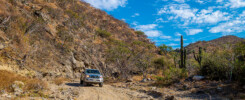
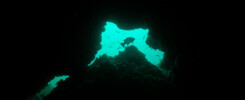
I have been eagerly awaiting your report.
Looking forward to the rest. 🤗
As always Sten beautifully written and so interesting.
I hope you and yours are well. So sorry to hear of the burglary at your home. Stay safe guys.
David x